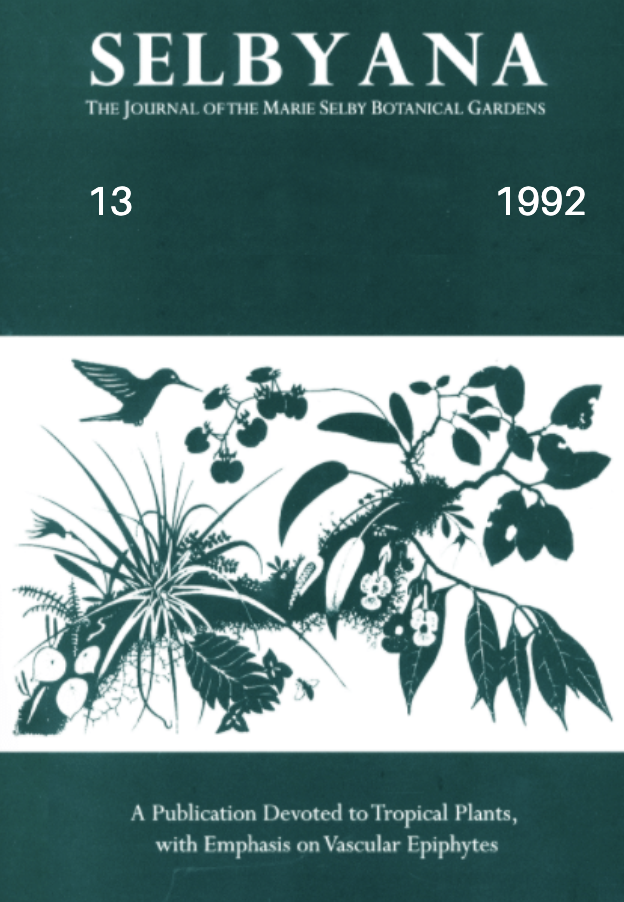Abstract
A population ofEncyclia tampensis was studied in a hammock near Fort Pierce, Florida, U.S.A. between November 1985 and January 1990. Nearly 100 orchids were recorded from a single live oak (Quercus virginiana) limb 2 m in length. Orchids ranged in size from I mm diameter protocorms to flowering plants with up to 30 pseudobu1bs (3-20 mm in diameter). Recruitment occurred in three ofthe four years, resulting in a total of 36 protocorms. Most protocorms were short-lived (4.4 ± 0.8 months); however, four lived more than one year and the oldest lived for 17 months. "Protocorms" first appeared in early summer and died in fall and winter, apparently from desiccation. Older "prebulb" seedlings (:::;2- 5 years old) were the most numerous growth stage and lived longer than protocorrns, with the majority surviving>2 years (mean observed longevity = 21.S ± 2.2 months). The longest-lived prebulb plant lived >48 months. Mortality was lowest for plants with pseudobulbs (:::; > 5 years); however, a few ofthese died. First flowering probably occurred at:::; 15 years ofage. In December 1989, a severe cold front passed through Florida; temperatures reached - 5°C, killing all the orchids. At other central Florida sites, mortality ofE. tampensis was high (>80%). Tillandsia spp., bromeliads (e.g., T. bartrami, T. fasciculata, T. jlexuosa, and T. setacea) suffered variable mortality. Tillandsia recurvata showed some mortality at exposed sites, but T. usneoides was unaffected. These observations suggest that meteorological factors (e.g., rainfall and low temperatures) can significantly affect epiphytes in Florida and must be considered in the context ofconservation.
Open Access and Copyright Notice
Selbyana is committed to real and immediate open access for academic work. All of Selbyana's articles and reviews are free to access immediately upon publication. There are no author charges (APCs) prior to publication, and no charges for readers to download articles and reviews for their own scholarly use. To facilitate this, Selbyana depends on the financial backing of the Marie Selby Botanical Gardens, the hard work and dedication of its editorial team and advisory board, and the continuing support of its network of peer reviewers and partner institutions.
Authors are free to choose which open license they would like to use for their work. Our default license is the Creative Commons Attribution-NonCommercial 4.0 (CC BY-NC 4.0). While Selbyana’s articles can be copied by anyone for noncommercial purposes if proper credit is given, all materials are published under an open-access license with authors retaining full and permanent ownership of their work. The author grants Selbyana a perpetual, non-exclusive right to publish the work and to include it in other aggregations and indexes to achieve broader impact and visibility.
Authors are responsible for and required to ascertain that they are in possession of image rights for any and all photographs, illustrations, and figures included in their work or to obtain publication or reproduction rights from the rights holders. Contents of the journal will be registered with the Directory of Open Access Journals and similar repositories. Authors are encouraged to store their work elsewhere, for instance in institutional repositories or personal websites, including commercial sites such as academia.edu, to increase circulation (see The Effects of Open Access).
